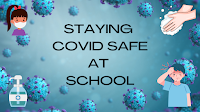 |
| Fourth of July History and Celebration |
Fourth of July Summary
On July 4, 1776, a group of leaders gathered and decided to
become independent of British rule.
They wrote a document called the Declaration of Independence. It announced that they were to be a new country, the United States of America, no longer under British rule. Click on this link if you would like a brief Summary of the Fourth of July.
We celebrate this historical day with parades, firework displays, family gatherings, and cookouts! We celebrate our independence as a country.
Do Our Kids Need to Know This History?
This is not just any holiday, it’s our country’s Independence
Day. Our kids need to know why this holiday was created, why it’s a major
celebration, and why we celebrate it every year! Because this is also a holiday that is
celebrated in the summer when most schools are out, even more so do we need to take the time to teach its history. Most important of all,
teaching them this history is a great way of building pride in being a U.S.
citizen. If you want a more detailed history of this event, go to History.com.
Teaching Resource
I have created a resource that teachers and parents alike can use to teach a brief history about Independence Day and how we celebrate it, the Fourth of July History Celebration Video.
It covers three areas.
History
A brief history is given of the occasion that created the need
for independence and how the Declaration of Independence was written in
response to this.
American Symbols
Some of the American Symbols are presented and a short history is given of each.
Celebration
An explanation is given of how this holiday is celebrated
around the country.
During the regular school year, we celebrate other occasions
when this can be taught since the 4th of July is in the summer. This
resource can be used as a complementary resource for Constitution Day which is
on September 17. Then there is Presidents Day which is on February 20th.
Resource Benefits
This teaching resource is provided in a zip file with 2 videos
and a pdf teacher page. One video has a music background and is narrated. The
narrated video is about 11 minutes long. The second video has the same slides
and only the music background. This video can be used interactively with your
students. The passages on each frame can be read in a variety of ways. Students
can read each one independently. They can be read chorally by you and all your
students. You can pause at any stage of the video to discuss with your
students.
Question Pages
These can be found halfway
through the video and at the end of the video. There are a variety of ways you
can use these pages. You can group or partner your students and they can work
to answer the questions. They can quietly write their answers on paper and turn
them in.
* Group Activity: Give each student a sticky note for
each question. Divide the board into that many sections. Students can write
their answers for each question, then post them on the board by the question #.
Divide your students into groups and assign them the sticky note answers for a
question or several questions. Each group is to study the answers and sort them
into correct and incorrect answers. Finally, each group must read their question
and report the correct answers.
Go to my stores to check out this teaching resource!













































